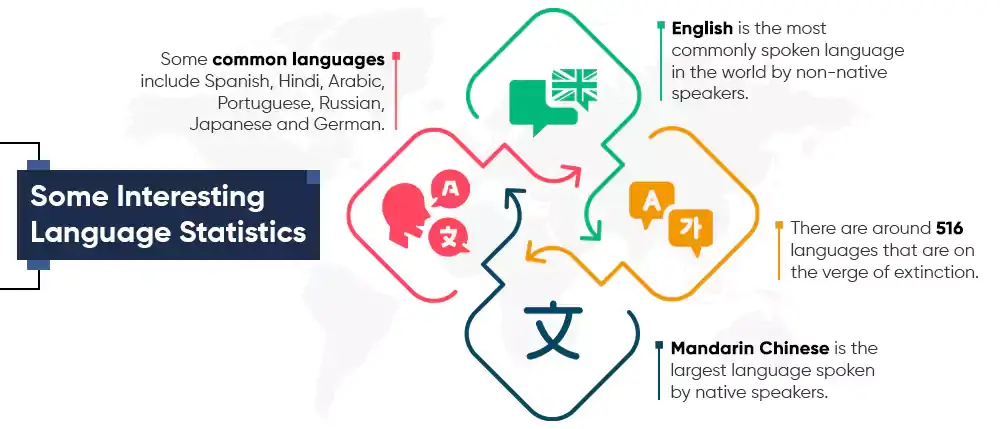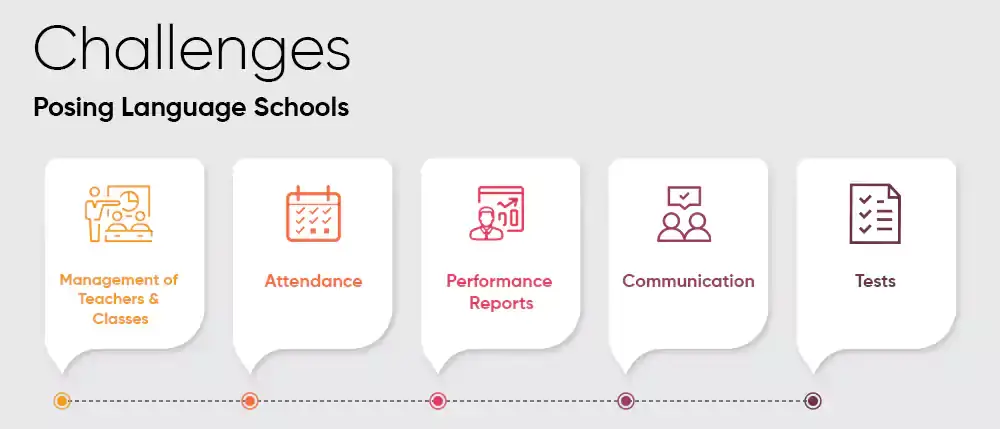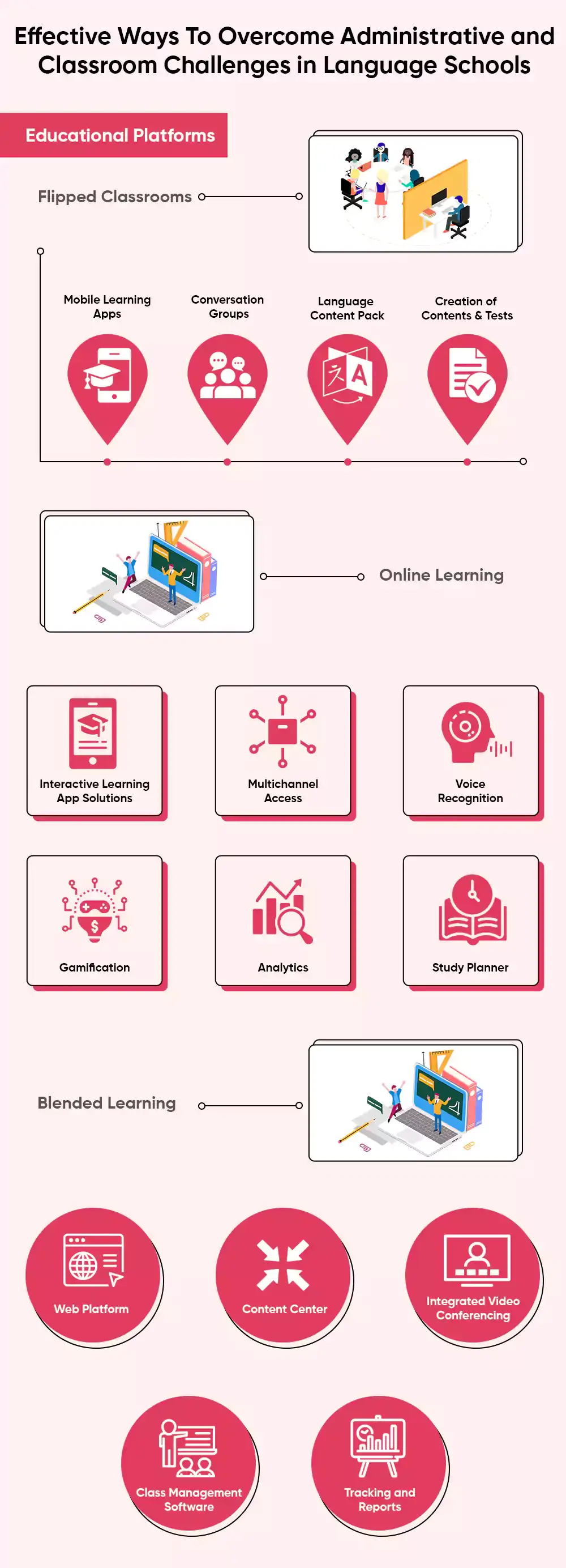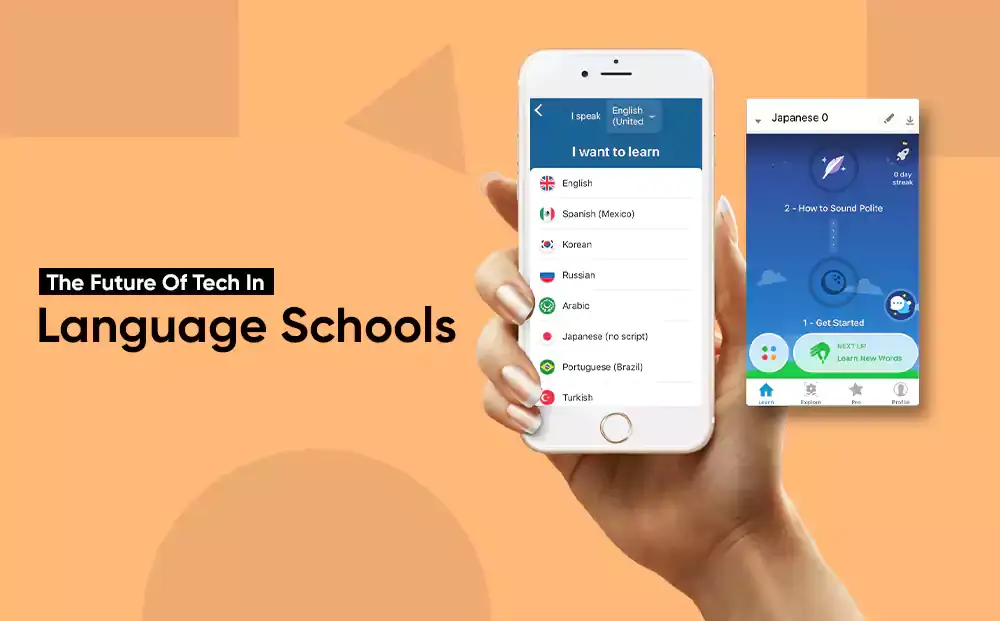-
solutinos
-
Hire
Frontend Developer
Backend Developer
-
NodeJS Developer
-
Java Developer
-
Django Developer
-
Spring Boot Developer
-
Python Developer
-
Golang Developer
-
Ruby on Rails Developer
-
Laravel Developer
-
.NET Developer
Technology
-
Flutter Developer
-
React Native Developer
-
Xamarin Developer
-
Kotlin Developer
-
Cross-Platform Developer
-
Swift Developer
-
MongoDB Developer
-
C Developer
-
Smart Contract Developers
Cloud
-
-
Services
Mobile Development
Web Development
- Work
-
Multi Services App
-
Food Delivery App
-
Grocery Delivery App
-
Taxi Cab Booking App
-
Multi Services App
-
OTT Platform APP
-
Social Media APP
-
Freelance Service App
-
Car Rental App
-
Medicine Delivery App
-
Liquor Delivery App
-
Sports Betting App
-
Online Coupon App
-
eLearning App
-
Logistics & Transportation App
-
Courier Delivery App
-
On-Demand Real Estate App
-
E-Wallet APP
-
Online Dating App
-
Handyman Services App
-
-
Process
-
Company

Did you know that there are approximately 6900 languages spoken around the world? Out of which, close to 60% of the world's population speaks around 30 of the most common languages in the world. That is somewhere around 4 billion of the earth's population speaking 30 diverse languages majorly.
With globalization, the need for people to move out of their regions, countries and landscapes has increased tremendously and it is not enough for people to just know their mother tongue to serve in this world.
Employers expect their talent pool to be multilingual and schools and universities prefer students who know more than 2 languages. Exposure is what matters today and any major dream or aspiration of a person today needs to be backed by the ability to speak multiple languages.
With that being the case, there is no way language schools can be ignored when we are discussing the ins and outs of the education sector. Indispensable and inevitable, language schools teach communication beyond geographical barriers and are required to meet career and academic goals.
However, a major chunk of the language schools out there are outdated in terms of their teaching methodologies, tech infrastructure, assessment methods, communication and more. There are ample ways to optimize learning and learning outcomes in language schools and this is exactly what this post is about.
Hello and welcome to another write up on the Digital Transformations in The Education Sector, where we discuss the challenges faced by language schools and also present tech solutions to them.
So, let's dive in deep now.
Some Interesting Language Statistics

- English is the most commonly spoken language in the world by non-native speakers.
- There are around 516 languages that are on the verge of extinction.
- Mandarin Chinese is the largest language spoken by native speakers.
- Some common languages include Spanish, Hindi, Arabic, Portuguese, Russian, Japanese and German.
Challenges Posing Language Schools

Language schools are specialized institutes that offer programs in either one or multiple languages. Usually, the aspects students and aspirants are taught include writing, speaking and listening. Despite practical lessons and updated methodologies, several language schools fail to nail teaching or learning impact and usefulness in their institutions. There are several reasons for this and on this post, we have handpicked a few plaguing concerns. Let's look at what they are.
Management of Teachers and Classes
Language schools generally find it tough to manage teachers and their rosters. Because this is a highly specialized segment that demands the need for native-level speakers who come with teaching acumen, finding the right teacher is a primary hurdle. And even when they do find, most teachers are temporary because of diverse reasons. This makes it difficult for administrators to manage teachers and their rosters to ensure learning happens uninterrupted.
Without a streamlining system in place, language schools also fumble in classes management in terms of timetable conception, allocation and more. One of the key differentiators of language schools is the fact that classes here are conducted in batches. This means that on a single day, there could be up to 4 batches taking different levels of language classes. Besides, there would also be weekend special batches, super-intensive batches and online batches.
With so many batches to juggle, language schools must plan their timetable in advance and have adequate staffing and teachers in place for classes to be seamless.
Attendance
Despite the fact that language schools maintain low student-teacher ratios, attendance still remains a redundant task. Offline methods such as paper-based manual attendance are conducted by instructors and multiple journals have to be maintained for different batches. This makes the entire process tedious and time-consuming. Besides, it also lacks the ability to detect patterns in absenteeism or ways to improve classroom engagement and teaching methodologies.
Performance Reports
Performance reports are vital for students to understand how they fare in their courses and programs. They need to know their progress over weeks as most language programs are conducted for a maximum of 120 days. This means that the progress shown needs to be substantial.
But with age old modus operandi, performance tracking is still a concern. Outdated grading systems are used and no personalized suggestions, recommendations or feedback are offered to students that would actually help them learn languages better. The analysis of strengths and weaknesses of students must be brought out for enriching learning.
Communication
Like we mentioned before, there are diverse batches in language schools and whenever an announcement has to be made on changes in curriculum, staff, sessions hours, holidays or more, they have to be made individually to the batches. Teachers have to read out circulars or announcements aloud or stick them on boards for students to have a look. This does not track the translation of such information or ensures whether students have seen the updates. If there's an exam coming up, chances are highly likely that students might miss out on such crucial information.
Tests
Though audio-visual elements are used in language schools, assessment techniques are still obsolete. Students are passive participants in tests and there are no effective, real-world scenarios tested. Students need to know if they could survive when they reach their preferred countries through these assessments but the concepts and assessment methods used are still ancient and ineffective.
Effective Ways To Overcome Administrative and Classroom Challenges in Language Schools

All of the problems or challenges we discussed could be overcome with simple tech integrations. There is a range of solutions available that you as a language school owner could choose depending on the scale and size of your venture. But how do these solutions tackle the challenges and what are the benefits they offer?
Let's find out.
Educational Platforms
Educational platforms are ideal solutions to the concerns prevailing in language schools. They are cloud-based solutions that allow you to conveniently plan your courses and modules. The best practical application of educational platforms on language schools is that they can be used to connect with batches of varying sizes, numbers and volumes through virtual classrooms.
They also offer personalized performance trackers for students to gauge their progress on their courses. Besides, educational platforms need not be installed on students' devices as well because they are based on the cloud. With automated assessments, seamless attendance tracking systems, interactive content, collaborative tools, third-party content and assistance and more, educational platforms multiply learning impact by manifold.
Flipped Classrooms
If you're new to this classroom concept, let us assure you that this is really offbeat and interesting. Becoming increasingly predominant over the years, flipped classrooms turn teaching methodologies upside down for more meaningful education. The current learning methodology dictates that students learn concepts at school and practice them at home through assignments and projects.
But flipped classrooms turn the tables upside down, where students are asked to learn concepts and content at home and they practice and apply their learning at institutions. This is a hybrid learning concept that deploys smartphone applications, portals and collaborative tools for impactful learning.
In general, flipped classrooms involve the following practices at home:
- online lectures, webinars and workshops
- online reviews of course materials
- access to digital content
- online discussions and forums and more
At institutes, students are required to:
- practice their skills
- peer-to-peer discussions
- presentations and debates
- lab experiments and more
From a language school perspective, this makes absolute sense as students or aspirants need to get hands on with the language they learn through multiple avenues. They need to speak to their peers, listen to them, comprehend, form sentences and responses in their mind, spell them out, enact scenarios, attend mock interviews and more.
When you get a flipped classroom setup developed from us, we would ensure it includes the following aspects.
Mobile Learning Apps
Mobile learning apps development are inevitable aspects of flipped classrooms. Apps ensure students are always in touch with their programs, modules, assessments and reviews. Students can always access the apps and their content instantly and receive reminders for exams, reviews, updates and more through push notifications. Personalized lesson trackers and performance monitors are also included to ensure learning is more enriching.
With in-app messaging services and timetable development tools, planning and communication are seamless as well.
Conversation Groups
Conversation groups enable students to practice their language with their peers in a monitored environment. When a moderator supervises the sessions, students can speak and listen in real time and understand where they go wrong and get appreciated for right responses, too. Conversation groups also foster an environment for students to gain confidence on their speaking skills and encourage active participation to speak and practice new languages. In our setup, conversation groups are virtual sessions with real-time analytics and metrics.
Language Content Pack
There are more than one ways to learn a new language and an ideal language school must ensure the most effective ways are accessible to students. That's where language content packs come in. These packs contain digital versions of books, resources, study materials, links to videos, documentaries, movies and more and include practice books, supplementary books, assessments and more.
This full-fledged pack equips students with everything they need to master their language with ease. Besides, these involve gradual increments of difficulty levels, ensuring self-paced students understand concepts and grammar syntaxes easily. Language packs can be easily incorporated into flipped classroom infrastructures and even be personalized depending on language preferences.
Creation of Contents and Tests
One of the best aspects of flipped classrooms is that it simplifies the process of content and assessment creation. They can be either automated or developed with minimal efforts by educators and teachers. With a minimal learning curve, tests and content can be developed and shared instantly with students.
Online Learning
Online learning is the future and it would absolutely make no sense if language schools skipped the opportunity to embrace the future. The online learning market is anticipated to be worth $325bn by the year 2025. Tons of companies and businesses around the world are looking at investing in edtech or online learning avenues to make learning more meaningful and purpose driven.
As far as language schools are concerned, adopting online learning mechanisms can enable them to remove caps on batches and time zones and pave way for perpetual classes. Even personalized, one-to-one sessions can be conducted based on learner preferences and market behaviour. Online learning involves multiple dynamics in the tech sector. To give you a quick idea, we have curated some of them.
Let's explore what they are.
Interactive Learning App Solutions
If you notice, learning in current classrooms is one-way. There is hardly any interaction happening between students and teachers. Educators conduct classes and students passively take notes and listen to lectures. But these interactive app solutions break these conventions by making students in charge of the driving wheel.
Teachers take a back seat and classes are conducted in an immersive manner, where students are constantly engaged and surprised through trivia, facts, videos, graphics, infographics, sound effects and more. The best part is that language programs can be made more interesting and fun through interactive applications.
Gamification is also implemented in these apps, where students are posed with challenges and rewarded points or scores for completing them. Leader boards are also created to inculcate a healthy competitive environment among students, where they can compete to top the board. The best aspect of gamification is that it personalizes the learning curve and makes the entire process rewarding.
Duolingo is a good example of interactive learning apps. It offers creative ways to learn a language with a steady learning curve and implements gamification as well. Rewards, achievements, stage unlocks and more are a few aspects of the features it offers.
Multichannel Access
With multichannel access, students can use your portal or an app from any device they own. It could be smartphones, laptops, desktop computers, tablets, smart televisions and more. The experience across any of these devices remains the same.
Voice Recognition
When students learn autonomously through apps, they need a space or a medium to speak and get their pronunciations verified. That's where voice recognition and a concept like natural language processing comes into the picture. These algorithms are trained to understand pronunciation, diction, tone, modulation and more and even verify them for language accuracy. With this, students can seamlessly optimize their speaking and pronunciation skills like they would do by talking to peers.
Analytics
Analytics is the way students can know more insights about their performance and progress in learning a new language. While conventional metrics can only show how much students have completed in a module and time take for it, advanced analytics in online learning platforms offer insights on pronunciation skills, writing skills, comprehension skills, listening skills, accuracy, areas in grammar (or other aspects) that need more attention, areas that the student is good at, estimated time for completing the course, dropout probabilities and more.
And it doesn't stop with analytics, the insights are beautifully represented visually through charts and graphs for easy comprehension as well.
Study Planner
Learning requires motivation and discipline. While motivation can be developed from external sources, discipline comes from within. And online learning solutions help students tap internally to inculcate learning discipline. With study planners, students can make a roadmap of what they intend to learn and when and the app would ensure they stick to it. They can also curate specific links or content needed for the session. With social sharing and similar tools, they can also make collective goals with friends and other students and work together.
Blended Learning
Blended learning is a mix of both online and offline learning. Let's look at what the components of blended learning are.
Web Platform
Web platforms allow students and teachers to conduct and attend online sessions, webinars, seminars, workshops and special classes. They take care of attendance when sessions are online and they are also used to curate and share notes, content, useful links and other resources required for the week or session. Web platforms also come with messenger features that allow students to get in touch with their educators for doubts and clarifications.
Besides, web platforms also offer access to administrative features such as service requests, fees payment, e-libraries and more.
Content Center
A content center is an online repository of all the study materials students would need to complete their language modules. They are constantly updated depending on needs and changes in curricula. Besides serving as a repository, content centers are also spaces for students and teachers to upload, store and retrieve notes, journals, points and reference materials discussed during sessions. Content centers act as libraries of sorts for students to study when classes are online.
Integrated Video Conferencing
Blended learning would be incomplete without video conferencing facilities. This is what connects students and teachers whenever there are no offline sessions. Through smartphone, computer or tablet cameras, stakeholders can join virtually and attend sessions. The sessions can also be recorded for future references.
Class Management Software
A class management software simplifies the execution of several redundant tasks like attendance, resources and facilities management, teacher salary pay-outs, invoicing, student enrolment, fees receipts and more. A holistic solution, a class management software offers personalized modules to all stakeholders involved.
Tracking and Reports
Reports are required on a daily basis from teachers' and administrators' perspectives. From attendance tracking and records to curriculum completion and teacher evaluation reports, diverse such touchpoints have to be monitored and analysed. While offline techniques are redundant and prone to errors, digital counterparts enable stakeholders to instantly download reports, track multiple metrics and do more.
Case Study
Self-paced learning has its own set of pros and cons. While you can learn at a speed, you're comfortable with, the major con is stirring up motivation to learn a new module every day. But that's exactly where Duolingo strikes with its innovative and engaging interactive learning app.
One of the most popular language learning apps, Duolingo attracted around 12mn new users this year, making the total number of users to 42mn. For those of you wondering if Duolingo really manages to bring back people to learning, let us share an interesting statistic that around 7bn exercises are completed on the app every month.
From Spanish and French to Hindi, people use the app to learn their preferred language and sometimes even more than one language at a time.
But how does the app manage to pull this off? Well, let's look at some interesting features.
Gamification
One of the interesting features of the app is the Speeduo feature, where users compete against time to match words and get rewards and unlock new levels. When they log in with their social credentials, they can even compare their scores with that of their friends to see where they stand on the leader boards.
Not just that, users can also challenge their friends and gain experience points.
Besides gamification, what makes this app click is its neatly organized course structures and modules, learning progress, colour scheme, clutter-free user interface, neatly defined learning goals and badges to keep your learning streak going.
The app has ranked top in several countries under the education category.
Need help
The Future Of Tech In Language Schools

The future looks promising as far as language schools are concerned. From our expertise and experience, we are looking at a world of wearable devices that listen to languages and translate input and output in real-time. This would enable classroom learning and give students the confidence to learn better by talking and listening.
Futuristic technologies like augmented and virtual realities will also be deployed by language schools to optimize immersive learning and make way for better concept retention. Visual connectivity and familiarization are important in learning a new language and these technologies would help students understand words, vocabulary, sentence structures and better.
Wrapping Up
Language schools now have an opportunity to fix their concerns through solid tech deployment in their premises (physical and virtual). All they have to do is get an ideal solution developed from a trusted company like ours to make learning more impactful and creative.
So, if you own a language school and are looking for ways to improve learning, manage classes better and offer top-notch services, reach out to us today.